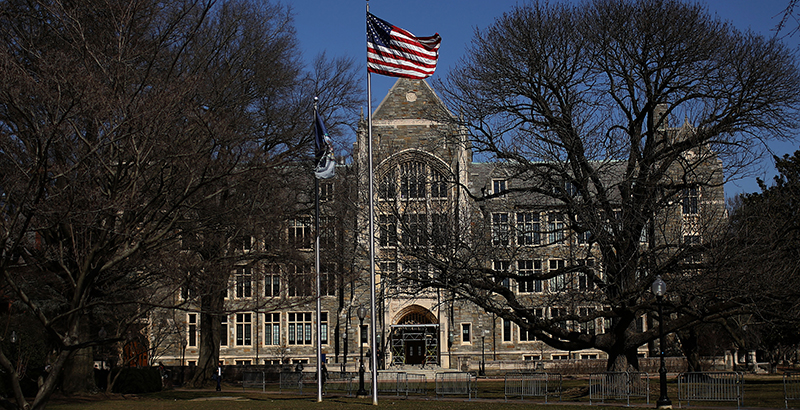Whitmire: Elite Colleges Empower First-Generation Students to Succeed Just By Letting Them Enroll. They Must Admit More of Them

Updated March 20
The universities involved in the astonishing admissions scandal may escape legal culpability — but they will risk moral culpability if they don’t use the scandal as a reason to change their admissions policies.
For the universities, the easy part will be stopping flagrant fraud such as sports coaches accepting bribes. Admissions preferences for a sailing team? Really?
A harder part will be cutting back on two legal but dubious admissions practices: “merit” scholarships designed to lure talented students whose parents can pay nearly full cost, and “legacy” admissions offered to children of alumni.
Now comes the toughest challenge: acknowledging that for years, universities have been rewarding too many students who don’t need them and ignoring students who really need what they offer.
As higher-education analyst Kevin Carey points out, research shows that, for the most part, tuition dollars invested in sending talented, well-off students to elite universities are wasted. With a few exceptions (lawyers aspiring to the Supreme Court who need to tap connections into all-important clerkships), these students will succeed in life regardless of where they attend college.
Those who really benefit, in a life-changing way, are first-generation students — low-income minority students who often don’t fare well in college unless they get into a top university. After-graduation income is usually cited as proof, but in reality, the biggest advantage is more simple: the likelihood of earning a degree.
As documented in my new book, The B.A. Breakthrough: How Ending Diploma Disparities Can Change the Face of America, the advantage for these students starts with the probability of completing college. At Ivy League universities and the most elite colleges, the odds that these students will emerge with a bachelor’s degree hovers in the 90 percent range. At flagship state universities, the odds of graduating are in the 80 percent range.
That stands in sharp contrast to what happens to most first-generation students, who end up in community colleges or commuter universities near home. Overall, about 13 percent of community college graduates go on to earn a bachelor’s. But at many of these schools, that rate for low-income minority students is actually in the single digits. At commuter universities, the likelihood that these students will earn a bachelor’s within six years is somewhere in the 30 percent range.
How do the elites do it? Mostly by keeping track of their most fragile students, offering academic help when needed and providing guidance help to keep them on track. They have the resources to do it. Plus, the first-generation students are surrounded by peers who view earning a degree as a certainty. That attitude is infectious.
At the elite universities, the issue is not how they treat first-generation students — it’s about how many they admit in the first place.
Couldn’t they take more? Yes, answers the American Talent Initiative, a campaign by The Aspen institute, Bloomberg Philanthropies and Ithaka S+R that advises colleges and philanthropies on getting more low-income students through college.
The initiative has a goal: By the year 2025, enroll and graduate an additional 50,000 lower-income students at the 318 colleges and universities that consistently graduate at least 70 percent of their students within six years.
Do-able? There is progress: The last survey the initiative ran among 96 of its members showed that after two years of the effort (academic years 2015-16 to 2017-18), an additional 7,300 low-income students got admitted.
Some did better than others. The University of California, Irvine, boosted the number of Pell Grant students by nearly 900 over that two-year period. Princeton University, over a longer period of time, starting in the 2012-13 academic year, doubled its number of Pell students, bringing the total up to 21 percent of its enrollment — and for the first time started accepting transfer students, including from community colleges.
Universities joining the initiative get a lot of hand holding, advice and collaboration from partner universities. So how to expand this even more? Some of the big moves: Shift “merit” aid, which all too often is used to attract top students who can afford to pay full tuition, to promising students who can’t. And shed luxury expenses such as lush student unions that have nothing to do with this goal.
That’s exactly what Dan Porterfield did as president of Franklin & Marshall College in Pennsylvania, which is a big reason he was tapped to be the new president of The Aspen Institute. It worked at F&M, and it can work elsewhere.
One more important move: Admit more talented graduates of community colleges, which is where most low-income students end up. The reluctance by many of the elite universities to even consider transfers is the worst kind of snobbery.
Finally, join the initiative! There are 318 universities with graduation rates of 70 percent or above, but to date, only 112 have signed on. Until now, the initiative has had a low profile. The admissions scandal offers an opportunity for it to become high profile.
“The issue this scandal shined a light on is how privilege is baked into the admissions equation,” said Martin Kurzweil of Ithaka S+R. “ATI’s single mission is to expand opportunity for talented, lower-income students at schools where they are likely to graduate.”
Richard Whitmire is the author of several books, most recently “The B.A. Breakthrough: How Ending Diploma Disparities Can Change the Face of America.” Whitmire is a member of the Journalism Advisory Board of The 74.
Disclosure: Bloomberg Philanthropies provides financial support to The 74.
Get stories like these delivered straight to your inbox. Sign up for The 74 Newsletter

;)
